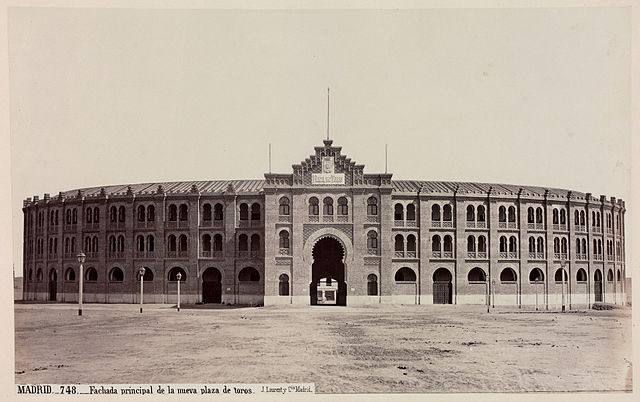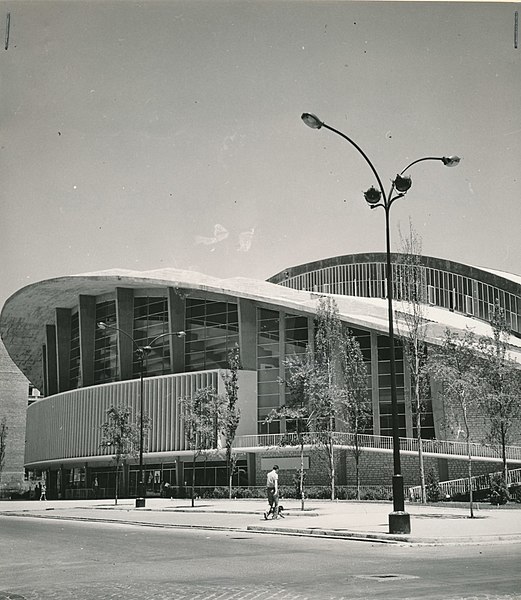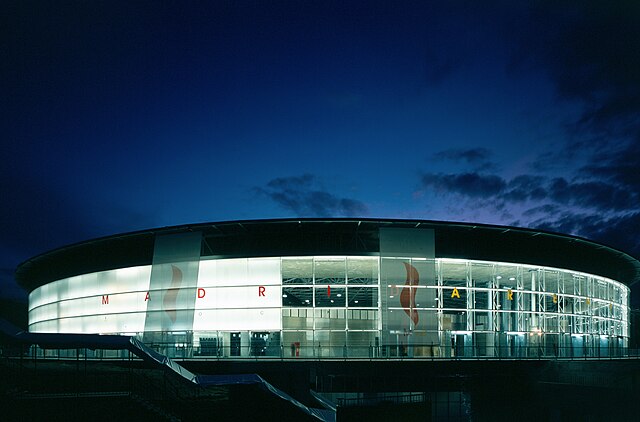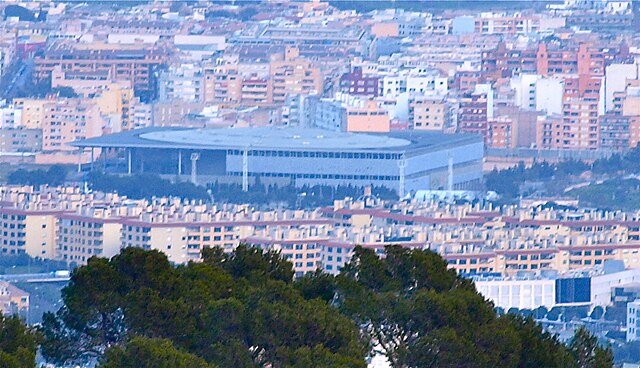Palacio de Deportes de la Comunidad de Madrid
Palacio de Deportes de la Comunidad de Madrid, officially WiZink Center since November 2016 for sponsorship reasons, is an indoor sporting arena located in Madrid, Spain.
Exterior of venue (c.2018)
The Goya bullring (1874), by Laurent
The building in 1961
Seating configuration for basketball
The 2007 FIBA European Championship, commonly called FIBA EuroBasket 2007, was the 35th FIBA EuroBasket regional basketball championship held by FIBA Europe, which also served as Europe qualifier for the 2008 Summer Olympics, giving a berth to the champion and runner-up teams. It was held in Spain between 3 September and 16 September 2007. Sixteen national teams entered the event under the auspices of FIBA Europe, the sport's regional governing body. The cities of Alicante, Granada, Madrid, Palma de Mallorca, and Seville hosted the tournament. Russia won its first EuroBasket title since the dissolution of the Soviet Union, by defeating hosts Spain, with a 60–59 score in the final. Russia's Andrei Kirilenko was voted the tournament's MVP.
Match between Lithuania and Italy in the Madrid Arena
Image: Exterior tocada 24oct 03 f.vidrio miguel de guzman
Image: Palacio de Deportes (Madrid) 16
Image: Palma Arena vist des Coll de Sa Creu








